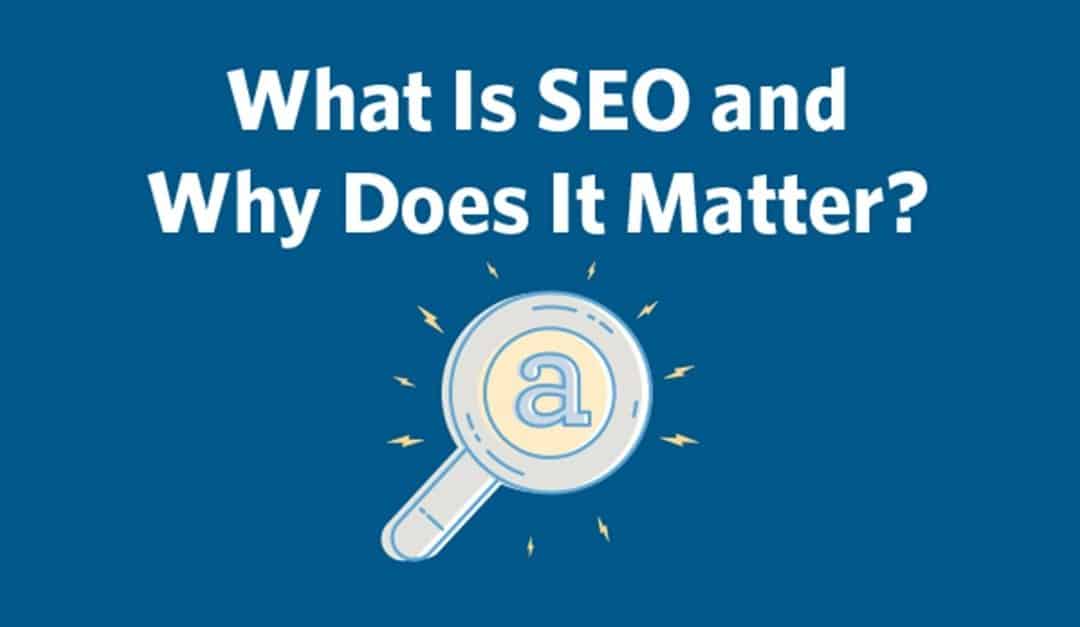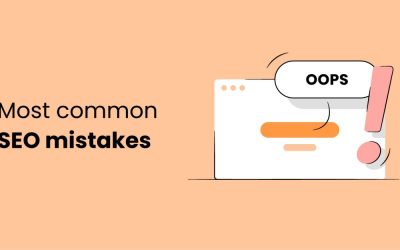A complete guide explaining what is SEO
Having an optimized website is a big part of any successful online business. It can bring in more sales, and establish a brand that users trust. SEO can also improve your website’s speed and navigation, as well as make it easier for people to find what they need. Using the correct SEO techniques can also increase your website’s traffic, and increase conversions. However, there are a few misconceptions about SEO.
In a nutshell, SEO is a set of rules that optimizes a web page for better ranking in search engines. This is done by making the pages more relevant to the searches of the users. Usually, the more relevant your web page is, the more likely it is to be ranked higher on the search results.
Google is by far the most popular search engine, with 86% of all searches conducted on it. Its algorithms evaluate hundreds of different factors to determine what is the best result for the user’s search. These algorithms are constantly improving. For example, if a person searches for a “coffee” keyword, the search engine will use the keywords “coffee” and “coffee shops” to display a result. These are both semantically related to the keyword “coffee.”
The most important factor in the search algorithm is the content of the web page. For example, if you are writing a blog post, you should include a high-performing keyword in the title and the body of the article. Likewise, you should include these keywords in other content.
The other important factor in the search algorithm is the number of incoming links to the web page. This means that you should build links to your site from other sites that are authoritative in their field. It is also important to create linkable assets, such as interactive pages and original studies.
It is also important to understand the needs of your audience. By figuring out what your audience wants, you will be able to create content that will appeal to them. You can do this by using the SEO Writing Assistant to help you evaluate your content. The SEO Writing Assistant will suggest improvements, which will increase the chances of your content being evaluated positively by the search engines.
It is also a good idea to research the top-performing keywords for your niche. For example, if your site is about coffee shops, you should be researching words such as “coffee” and “coffee stores.” These are long-tail keywords that are very specific and answer a particular search query.
Another important thing to remember when it comes to search optimization is that your URL slug is like a URL address for your page. It tells the search engine what you are expecting from the specific page. Therefore, the slug should reflect the content of the page. If your URL slug is too long or confusing, the search engine will not know what to expect from your page. You can fix this by creating shorter URL slugs.
The Importance of Keyword Research
KEYWORD RESEARCH is the practice of finding search terms and queries. It is a critical part of a successful SEO campaign.
Long-tail keywords get less search traffic
Using long-tail keywords in your marketing is a great way to increase your search traffic and convert more visitors into customers. These keywords are a lot easier to rank for and generate more qualified traffic than short-tail keywords.
When you choose to target long-tail keywords, you’re focusing on the most relevant audience for your product or service. This is a more affordable and less competitive strategy.
When you use long-tail keywords, you are targeting the most specific people who are ready to take action. This is the ideal way to increase your organic traffic, boost conversions, and separate your brand from the competition.
Using long-tail keywords will help you gain higher rankings on Google, which means more qualified traffic. Using this technique will also give you better ROI than using a traditional keyword strategy.
Another reason why targeting long-tail keywords is more effective is because they are less common. They are easier to rank for, which means that you will have fewer competitors. This makes it easier to rank on the first page of search results.
Identifying buyer personas
Identifying buyer personas with keyword research can help companies get a clearer picture of their target market. Using this information can help create targeted content and improve conversions.
The creation of a buyer persona isn’t difficult and can be done through several different methods. For example, you can use Google Analytics to gather demographic data on your website, and visitors. Or you can speak to current customers. However, the best way to begin is to get a good understanding of the buying process and your own role in it.
Another way to build a buyer persona is to conduct market research. You can find several free templates online that will help you generate some of the key questions you will need to answer. For example, you may need to understand what type of music your prospective customers like. You may also want to figure out what they’re looking for in a mobile app.
You can use a tool such as StellaPop to help you define your buyer persona. This tool has extensive experience defining and building effective marketing campaigns.
Creating optimized landing pages for your search terms
Creating optimized landing pages for your search terms is a vital part of any successful SEO campaign. The goal of a landing page is to provide useful information, answer visitor questions, and convince visitors to take a desired action. By using SEO tactics and a sound content strategy, you can create high-performing landing pages that drive traffic and conversions.
The first step to creating an effective landing page is to define your goal. For example, does your landing page aim to increase brand exposure, sell products, or educate your audience?
The second step is to use SEO techniques to enhance your content. In general, content that is more comprehensive will retain more of your visitor’s attention. In addition, your content should be structured to allow search engines to correctly index it.
The best way to optimize your landing page is to use a keyword research tool. This will give you a list of relevant keywords that you can use to craft the content of your page.
Making your article or blog fit your keyword strategy
Whether you are writing an article or a blog, it is important to make your content fit your keyword strategy. Search engines look for content that is relevant to a user’s search. The more relevant your content is the higher your chances of ranking.
The first step to making your content fit your keyword strategy is to research keywords. This involves entering a term into a search engine to identify how many people are searching for it. The more competitive the keyword, the harder it will be to rank for. On the other hand, low-volume keywords are more likely to lead to a conversion.
Another important component to making your content fit your keyword strategy is using headings. These are HTML tags that signal to search engines how relevant your content is. They are particularly helpful if you are trying to rank for multiple keywords. The general rule is to insert the primary keyword once every 100 to 150 words.
Next, you should include the secondary keywords, which are slight variations of the primary keyword. These should be placed in the first 200 words.
Learn the Basics of Search Engine Optimization
Getting your website to the top of the search engine rankings is not an easy task. It takes time and dedication, but you can learn the basics of search engine optimization and get started.
Keywords
Using SEO to increase website traffic is a good way to build a brand and get more business. However, it is important to understand what you are doing. Choosing the right keywords is one of the most important steps to success.
There are three types of search: informational, navigational, and transactional. Content creators should learn what each type of query is looking for before optimizing their site for each type. For example, if you want to target a hotel in Amsterdam, you’ll need to optimize for long-tail keywords that will yield better results.
Using a search engine like Google to look for a particular search term will show you which pages are ranking for the most popular search terms. If you have a high-ranking page, you will get more traffic than if you don’t.
Using title tags correctly can be a big help to your search engine optimization campaign. Not only does it help with click-throughs, it also helps build your site’s hierarchy. When a user is deciding whether or not to click on a particular link, they will first see your title tag.
It is important to include your main keyword in your title tag. However, you do not want to overuse it. Overuse can be a detriment to your page’s search engine ranking.
It is also a good idea to use a long-tail version of your primary keyword. This helps Google match your content to the searcher’s intent.
Another useful title tag trick is to include your brand name at the end. This is done by adding hyphens to separate the keywords. You can also use “power words” to enhance your title tag. These are words that stir emotion and can boost your CTR.
Internal and external linking
Using internal and external links in your search engine optimization strategy can help your website achieve greater visibility and improve your overall SEO strategy. These two aspects are both important to search engines, but they are also very different. Understanding the differences can help you develop a successful SEO strategy.
A key difference between internal and external links is that internal links are within your site. These links are meant to guide users to other pages on your website. They can be in the body of your page, in a sidebar or on a menu. The links should be relevant and helpful to readers.
Linking to other related content can provide your website with additional context while improving your search engine results. If you have an article about the best hotels in San Francisco, for example, you can link to a must-try restaurant there.
Formatting and media affect dwell time
Using visuals on your web pages is a great way to keep your visitors on your site for longer. Images can convey what your page is about and guide them to a suitable call to action. A well-placed image can also help increase your click-through rate.
The most important thing to remember is that you want to provide your visitors with content they’ll actually find helpful. A page that is cluttered with useless text will quickly lose the attention of your most devoted customers. Incorporating the best practices for search engine optimization can be a daunting task, but a little forethought can go a long way.
A good place to start is to consider the average time your visitors spend on your site. This is important because it can help you determine if you’re on the right track or if you need to make some changes to your layout or content.
Other types of SEO
Getting better search rankings involves using a variety of SEO techniques. Some techniques are free and others may require a professional. A good rule of thumb is to try several types of SEO before settling on a particular strategy.
Google’s algorithms measure hundreds of factors. They analyze the content of a page and decide on the order in which it should appear. They also look at metadata to determine how quality of the page. The algorithm may also give preference to web sources that load faster.
The first step in SEO is to create content that is relevant to your target audience. Then, use keyword-rich meta descriptions and title tags. Optimizing these elements will ensure that your website is optimized for search. You can do this manually, or by editing the code of your page.
On-Page SEO – How to Boost Your Search Engine Rankings
Having an on-page SEO strategy is a must if you want to make sure that your website ranks in the top spots of Google. Getting high-ranking positions is the key to increasing traffic to your site. However, it is important to note that external links will not help you increase your rankings.
Structured data
Adding structured data to your web pages can improve your search engine rankings. It can also make your website more accessible and improve navigation between complementary content.
The process of implementing structured data is known as schema markup. It consists of reinforcing the source code of your website. You may use third-party tools to help you implement structured data. You can also check the Rich Results Test to see what your markup looks like in the search results.
When you optimize your site, you should focus on content that is valuable to the user. This means adding relevant images, infographics, and more. It also means creating a topic-optimized title tag.
Meta description
Optimizing a meta description is a great way to boost your website’s search engine rank and increase the amount of traffic that comes to your site. A good meta description will also draw attention and inspire readers to click on your link.
The meta description is a short summary of what a page contains. It’s displayed in the search engine results pages (SERPs) when a user searches for a related keyword. It can be a short and succinct piece of writing, but it should also include a few keywords.
Adding an image description is a nice touch, too. It’s important for people who use screen readers, and it will help search engines understand your images. It’s also a good idea to add your focus keyword to the alt text.
Title tag
Having a good title tag is a critical part of on-page SEO. It’s the first thing your visitors see and helps them decide which page to click on. It also informs other elements of your site’s title. Creating an effective title tag is a good way to make sure your site’s content is well-written and informative.
A title tag should be concise and descriptive. It should include all the keywords you want to rank for. This means it should be at least 10 characters long, ideally 50-60 characters. You can also add an eye-catching feature to it.
The best title tag is the one that works for both humans and search engines. Google’s search algorithms will favour a title that is short and readable. If it’s too long, you’ll waste valuable space.
Keywords within the first 100 words
Optimal on-page SEO is the secret to generating significant traffic to your website. This is best accomplished through a combination of technical and marketing methods. While you may not be able to hire a professional SEO consultant, you can take a page from their playbook and spruce up your site with a little elbow grease and a sprinkling of SEO magic.
Using a keyword research tool such as Semrush is a good way to find the most pertinent keywords for your content. For instance, you can find out how many times your competitors are using the same term. Taking the time to learn more about your competition is a great way to learn about SEO tips and tricks to help you beat them to the punch.
Avoid long sentences and paragraphs
Using the right words at the right times can help you rank higher on the search engine results page. One of the best ways to do this is to write a solid meta description for each of your posts. This is a great way to make your content stand out from the crowd and increase your chances of getting ranked on the first page of Google’s mobile rankings.
Another way to improve your ranking is to take the time to write a few blog posts that are long-form, which is more likely to be read by a potential customer. When writing your posts, you should also use a good writing style. In addition to using good grammar and punctuation, you should take a look at how often your posts are updated. A good rule of thumb is to make each post at least once a month, if not twice.
External links won’t boost rankings
Adding external links is a very effective way to increase your website’s credibility. It also allows you to connect with other people and websites in your industry. This will help you get your content in front of the right audience.
Google considers external links to be a very important factor in rankings. When you have high-quality links on your pages, you will have a higher ranking. It will also boost your traffic.
Google also looks at the anchor text of your link. It’s a good idea to include descriptive keywords in the anchor text of your links, as search engine spiders will use it to determine which page you are pointing to.
Using Link Building to Improve Search Engine Rankings
Using link building is a strategy to help your website rank higher in search engines. In general, it aims to improve the number of inbound links to a webpage and to improve the quality of those inbound links. The quality of the inbound links is determined by the websites that are linking to your site, as well as the relevance of the content on those websites to your site.
Social media sites have little to no SEO value
Despite what many social media aficionados may say, Google and Facebook do not interact in the same way that they do with websites. That is if you can even call the relationship an interaction. Those who are aware of the details know that Google’s algorithm does not crawl much of Facebook’s information. That means the Facebook posts you make on your profile probably have little to no SEO weight.
The web is all about fostering an audience and building relationships. Using social sites to spread the word about your website or brand is one of the best ways to do that. It also enables you to humanize your business, which in turn increases the chances of being mentioned by potential customers.
Although social sites are not directly tied to search engine rankings, they do indirectly help your rankings in a variety of ways. It is not uncommon for people to find your site via a link from someone else’s social profile.
Relevance of the content of the sites you’re linking from
Getting a link to a high-quality website is the holy grail of SEO. You’ve got to be careful about the site you link to or you could get dinged. The best way to ensure you don’t get dinged is to make sure your link to a site has been reviewed and checked for validity. This is especially important for low-quality or spammy links.
The best way to check this is to use a domain authority checker. This is a nifty little app that allows you to see which sites are ranking well for a given term. In some cases, you may find that you are already linked to a site that is a close match. If you are not already in contact with a site owner, then you might want to consider an outreach program. This can be a low-cost and low-effort way to get quality links to your site.
Leverage anchor text
Using a number of different keyword variations in your anchor text is important for search engines. This helps them understand the content of your page better. It also reduces the risk of manual actions being taken against your site.
The best way to know how your anchor text is doing is to track it. This is the only way to find out how it is affecting your SERP. You can do this by utilizing dedicated tools that will provide you with detailed information on your anchors.
The first thing you need to do is determine whether your anchors are generic or exact. These are two of the most common types of anchors used on the internet.
A generic anchor will not mention a keyword or URL. This type of anchor is a safe choice. But, if you want to boost your rankings and attract natural traffic, it is best to use an exactly matched anchor.
Disavow spammy links to prevent a Google penalty
Using the Disavow Link tool is a method to remove spammy links. However, the process is not simple. You must follow certain guidelines and instructions before you can use this tool. You may have to spend some time before you can get the results you desire.
It is always recommended to perform a link audit and review your website’s link profile. This can help you determine which links are toxic and which are good. Once you’ve identified the bad links, you can contact the owners of the website and ask them to remove them. If you’re not successful in removing them, you can consider disavowing them.
There are also third-party tools that you can use to identify and remove spammy links. CognitiveSEO’s Unnatural Link Detection tool will analyze your links and help you to identify which ones are spammy. You can even try the free trial version of the tool.
To prevent a Google penalty, you need to do a link audit. This can be a time-consuming task, but it’s crucial if you want to protect your site from a penalty.
Increasing Your Website Page Speed
Increasing your website’s page speed can help to improve user satisfaction and increase conversions. There are several different tools that you can use to optimize your site, and the easiest way to do so is to use Google’s PageSpeed tool.
Increase conversions
Increasing conversions isn’t an easy task. It’s one of the most difficult tasks for any business. However, it is possible to gain a significant competitive advantage by making a few simple changes.
Whether you’re a small startup or a global corporation, you can improve your conversions by optimizing your website page speed. In fact, even a second delay can drop your conversion rate by 7%. The impact of a slow site is felt by customers from the moment they land on your site. They will be less likely to return and may not buy from you.
Google also believes that website speed is an important factor for e-commerce sites. In fact, it has set targets for site speed. To meet these standards, most e-commerce sites should optimize for a load time of two seconds or less.
Another factor that affects website speed is the number of assets on the site. These include images, which are often large files. Keeping a low image count will improve the weight of your web pages. In addition, a shorter navigation menu will make indexing your site easier.
Many e-commerce sites have reported that a delay of just a few milliseconds has a negative impact on their conversion rates. It has cost millions of dollars in eCommerce sales. In fact, according to a study by Skilled, 70% of consumers believe that a slow website negatively affects their decision to purchase. Moreover, 79% of these consumers say that they will not return to a website if the performance is poor.
Improve user satisfaction
Increasing your website page speed is a great way to improve user satisfaction. A faster site can make it easier for users to explore your content, and can also reduce your bounce rate. Depending on the type of site you have, there are several factors to consider when optimizing your page speed.
There are many things to consider, but the first thing to check is your server response time. If your server takes too long to respond to requests, your site could be taking a very long time to load. Ideally, your server should be able to respond to any request in 200ms or less. You can test your site’s response time using various performance metrics. If your server is slow, try deferring some of your files so that they are ready when more important content is available.
A study by Machmetrics determined that the average website load time was 8.66 seconds. It is estimated that an extra second of delay in page load time can result in 20% of traffic being lost. This is not a small feat, and improving your page speed can pay off handsomely in terms of conversions and visitor retention.
Google has also done some research on the subject. It has been determined that a one-second delay in page load time can decrease user satisfaction by up to 16%. In addition, there is some data to show that improving your page speed will increase your overall conversion rates by up to 10%.
Appeal to Google
Luckily, Google has given the webmaster worthy of a second helping hand with tools aplenty to boot. The best part is that you don’t have to shell out thousands of dollars to get the lowdown on what works and what doesn’t. A few keystrokes and you are on your way to the Googleplex. The following are a few tips and tricks to get you started. After all, you can’t expect your users to wait around for a while. You’re in the business of providing a better-than-average customer experience. Luckily, you’ll be on your way to a better-than-average bottom line in no time.




